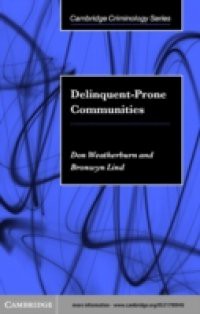Despite a century of effort, criminologists do not yet fully understand the relationship between disadvantage and crime. The balance of evidence suggests that economic and social stress increase the risk of involvement in crime by increasing the motivation to offend. But there are a number of empirical anomalies that cannot easily be reconciled with this interpretation of the evidence. Weatherburn and Lind argue that the transmission mechanism linking economic and social stress to crime is not offender motivation but disruption to the parenting process. They put forward an epidemic model of the genesis of delinquent-prone communities and show how this model resolves the empirical anomalies facing conventional interpretations of the disadvantage/crime relationship. This book offers compelling new evidence which will stimulate debate in this area of criminology and will also interest academics, policy makers and practitioners in the field.

